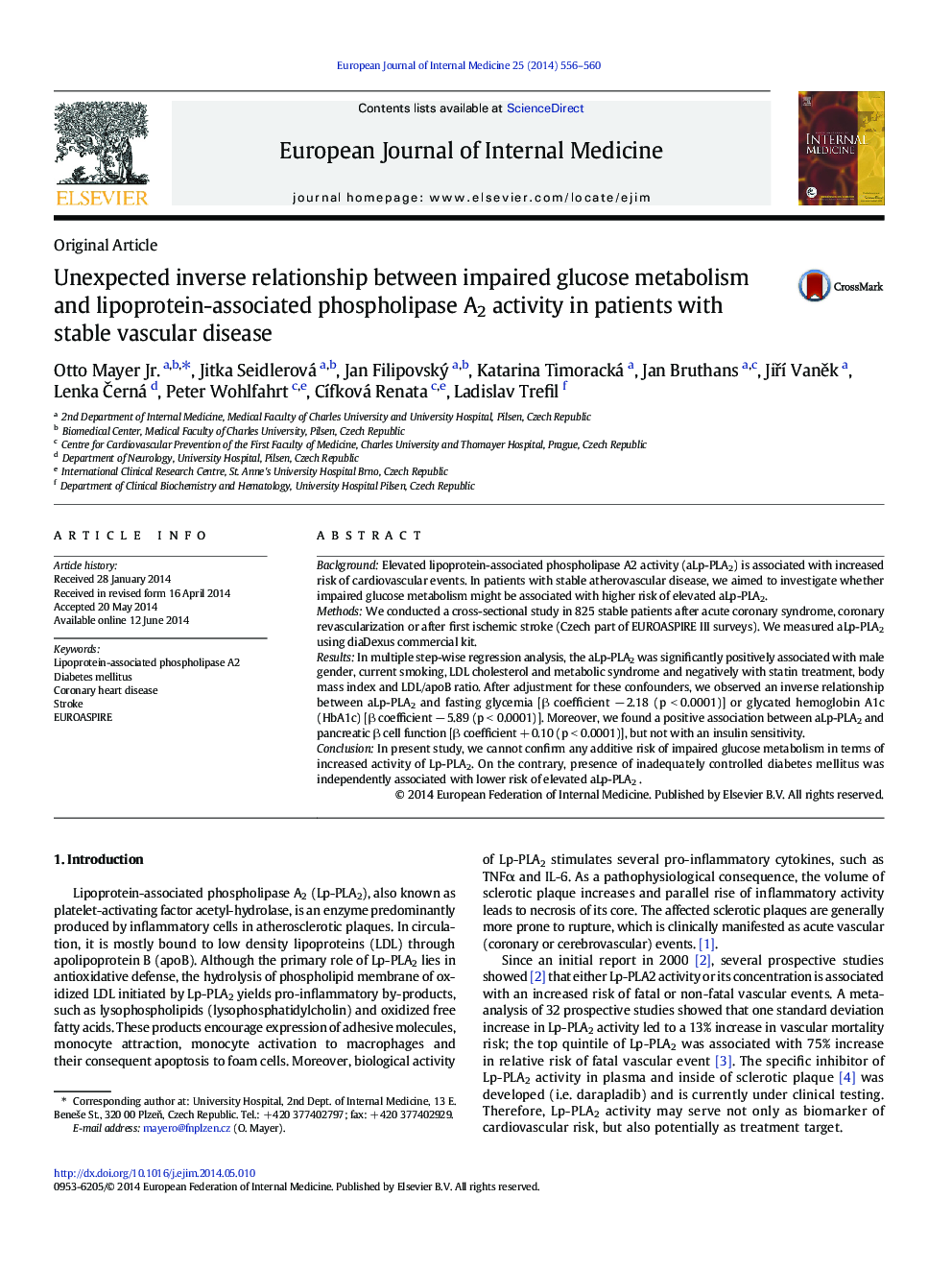| کد مقاله | کد نشریه | سال انتشار | مقاله انگلیسی | نسخه تمام متن |
|---|---|---|---|---|
| 3466520 | 1596554 | 2014 | 5 صفحه PDF | دانلود رایگان |

• A cross-sectional study was realized in the setting of stable vascular patients.
• Lp-PLA2 activity was positively associated with relative smaller LDL particles.
• Inverse association between Lp-PLA2 and fasting glucose or HbA1c was found.
• Supranormal Lp-PLA2 activity decreased the risk of impaired glucose metabolism.
BackgroundElevated lipoprotein-associated phospholipase A2 activity (aLp-PLA2) is associated with increased risk of cardiovascular events. In patients with stable atherovascular disease, we aimed to investigate whether impaired glucose metabolism might be associated with higher risk of elevated aLp-PLA2.MethodsWe conducted a cross-sectional study in 825 stable patients after acute coronary syndrome, coronary revascularization or after first ischemic stroke (Czech part of EUROASPIRE III surveys). We measured aLp-PLA2 using diaDexus commercial kit.ResultsIn multiple step-wise regression analysis, the aLp-PLA2 was significantly positively associated with male gender, current smoking, LDL cholesterol and metabolic syndrome and negatively with statin treatment, body mass index and LDL/apoB ratio. After adjustment for these confounders, we observed an inverse relationship between aLp-PLA2 and fasting glycemia [β coefficient − 2.18 (p < 0.0001)] or glycated hemoglobin A1c (HbA1c) [β coefficient − 5.89 (p < 0.0001)]. Moreover, we found a positive association between aLp-PLA2 and pancreatic β cell function [β coefficient + 0.10 (p < 0.0001)], but not with an insulin sensitivity.ConclusionIn present study, we cannot confirm any additive risk of impaired glucose metabolism in terms of increased activity of Lp-PLA2. On the contrary, presence of inadequately controlled diabetes mellitus was independently associated with lower risk of elevated aLp-PLA2 .
Journal: European Journal of Internal Medicine - Volume 25, Issue 6, July 2014, Pages 556–560